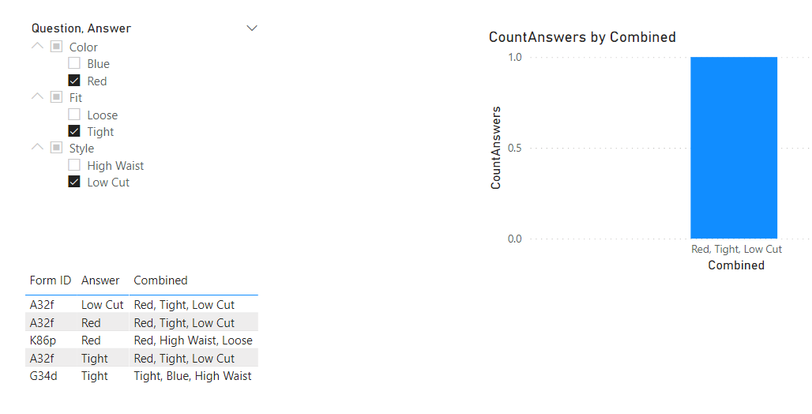FabCon is coming to Atlanta
Join us at FabCon Atlanta from March 16 - 20, 2026, for the ultimate Fabric, Power BI, AI and SQL community-led event. Save $200 with code FABCOMM.
Register now!- Power BI forums
- Get Help with Power BI
- Desktop
- Service
- Report Server
- Power Query
- Mobile Apps
- Developer
- DAX Commands and Tips
- Custom Visuals Development Discussion
- Health and Life Sciences
- Power BI Spanish forums
- Translated Spanish Desktop
- Training and Consulting
- Instructor Led Training
- Dashboard in a Day for Women, by Women
- Galleries
- Data Stories Gallery
- Themes Gallery
- Contests Gallery
- Quick Measures Gallery
- Notebook Gallery
- Translytical Task Flow Gallery
- TMDL Gallery
- R Script Showcase
- Webinars and Video Gallery
- Ideas
- Custom Visuals Ideas (read-only)
- Issues
- Issues
- Events
- Upcoming Events
To celebrate FabCon Vienna, we are offering 50% off select exams. Ends October 3rd. Request your discount now.
- Power BI forums
- Forums
- Get Help with Power BI
- DAX Commands and Tips
- Count Permutations Within a Column Based on Slicer...
- Subscribe to RSS Feed
- Mark Topic as New
- Mark Topic as Read
- Float this Topic for Current User
- Bookmark
- Subscribe
- Printer Friendly Page
- Mark as New
- Bookmark
- Subscribe
- Mute
- Subscribe to RSS Feed
- Permalink
- Report Inappropriate Content
Count Permutations Within a Column Based on Slicer (DirectQuery Model)
Hello All!
Very new to Power BI here, but I hope you all can help.
I had set up some sample data to experiment with for getting the result I hoped for. I thought I got it, but then when applying it to my real data, I end up with a “Function 'CALCULATE' is not allowed as part of calculated column DAX expressions on DirectQuery models” error. So it looks like I’m back to the drawing board!
I’m basically trying to count permutations within my data based on selections in a slicer. You can see the functionality here:
Here’s my sample data:
Clothes:
| Form ID | Question | Answer |
| A32f | Color | Red |
| A32f | Fit | Tight |
| A32f | Style | Low Cut |
| G34d | Color | Blue |
| G34d | Fit | Tight |
| G34d | Style | High Waist |
| K86p | Color | Red |
| K86p | Fit | Loose |
| K86p | Style | High Waist |
With a lot of googling and fiddling, I ended up with two measures and a calculated column.
(Measure 1) CountAnswers:
CountAnswers =
VAR _NoSelection =
NOT CALCULATE ( ISFILTERED ( Clothes[Answer] ), ALLSELECTED ( Clothes[Answer] ) )
RETURN
IF (
NOT ( _NoSelection ),
IF (
CALCULATE ( DISTINCTCOUNT ( Clothes[Answer] ), ALLSELECTED ( Clothes[Answer] ))
= COUNTROWS ( ALLSELECTED ( Clothes[Answer] ) ),
1
)
)
(Measure 2) CountAnswersTotal:
CountAnswersSUM =
SUMX ( DISTINCT ( Clothes[Form ID] ), [CountAnswers] )
(Column) Combined:
Combined = CALCULATE(CONCATENATEX(Clothes,Clothes[Answer], ", "), FILTER(ALL(Clothes),Clothes[Form ID] = EARLIER(Clothes[Form ID])))
Is there any way to recreate the functionality here that will work on DirectQuery model?
Thanks!
- Mark as New
- Bookmark
- Subscribe
- Mute
- Subscribe to RSS Feed
- Permalink
- Report Inappropriate Content
Does the result have to come from a single table or can the slicer be fed from a disconnected table?
- Mark as New
- Bookmark
- Subscribe
- Mute
- Subscribe to RSS Feed
- Permalink
- Report Inappropriate Content
Hi Ibendlin,
In theory I can do whatever I need to do with manipulating the data layout as long as the data itself is good. It does currently all reside in one table with many columns, though I only need the three listed above for this, (I assume).
Thanks! I appreciate any direction you can give.
SEDE



